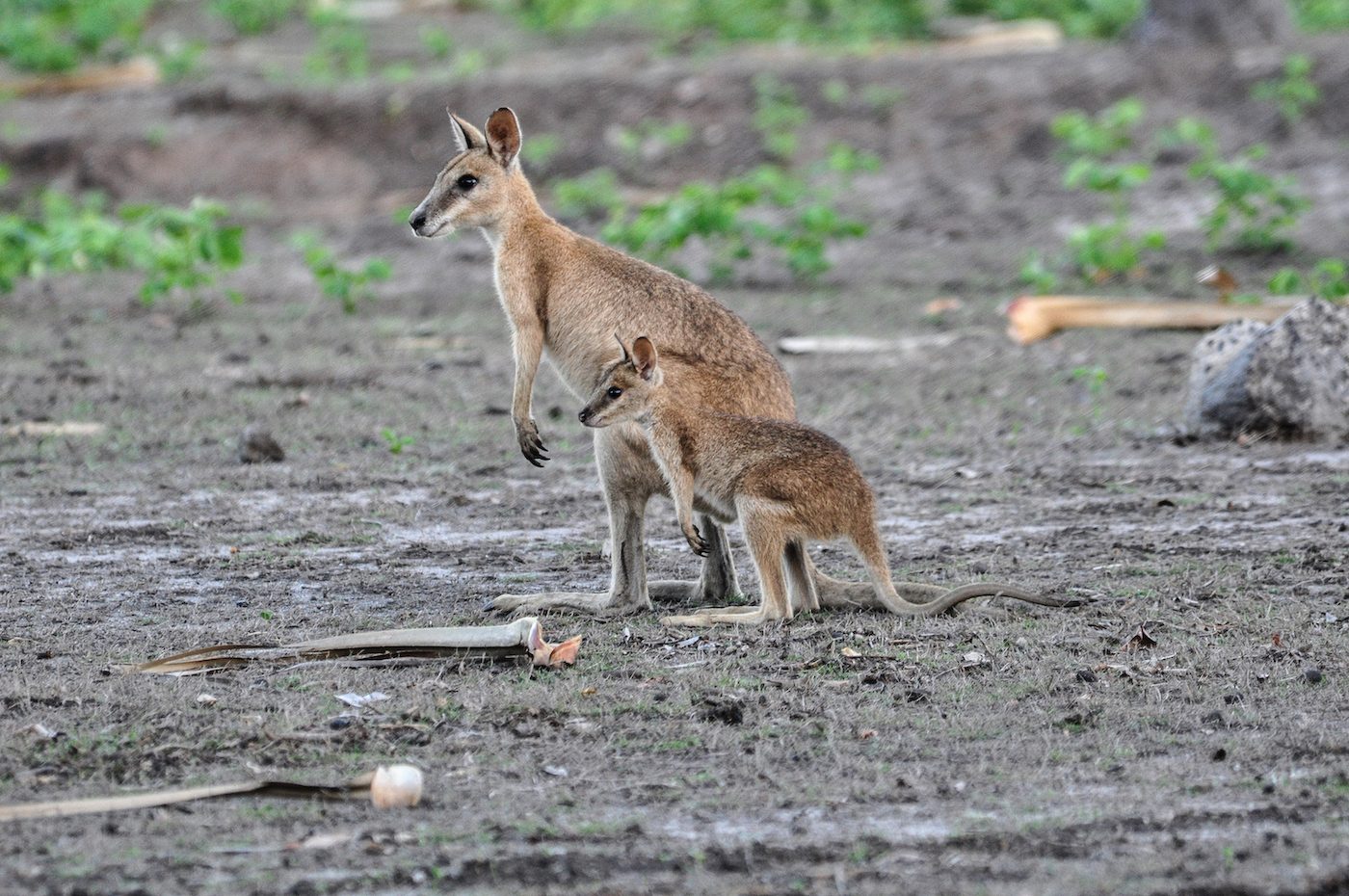From marauding jaguars in Brazil’s Pantanal to docile manatees in the Florida mangroves, from water buffalo browsing in Indian marshes to lurking crocodiles in Australia’s Outback swamps, wildlife flourishes in wetlands worldwide.
Natural Habitat Adventures offers exciting wildlife adventures to some of the planet’s most important wetlands. Central to the company’s mission of Conservation through Exploration, Nat Hab strives to improve the condition of its wild destinations, a crucial goal for such environmentally sensitive areas such as wetlands, which are vital to the health of the planet.
In this post, we’re highlighting five of our favorite Nat Hab trips that offer guests a close-up look at these vitally important natural ecosystems. Cultivate a sense of wonder and come away with a profound appreciation for the ecological role of wetlands and their wild inhabitants.
1. Brazil’s Pantanal
While the Amazon may be better known, the Pantanal offers South America’s greatest wildlife extravaganza. This UNESCO Biosphere Reserve is the world’s largest seasonal floodplain, sprawling over 75,000 square miles in the heart of the continent and containing its densest concentration of wildlife. The vast mosaic of marsh and islands is home to 10 million caimans, 650 bird species, and 100 different mammals, including capybara and maned wolf. The Pantanal’s freshwater wetlands support a profusion of aquatic fauna that attracts a host of larger predators, creating a huge, intricate food chain, with the jaguar sitting right at the top.

On the 11-day Jaguars & Wildlife of Brazil’s Pantanal itinerary, Nat Hab guests venture deep into this amazing realm—traveling by boat, on 4×4 safari drives, and on guided walks – learning all about the region and its wildlife from expert naturalist guides. Departures are available from June to October, and the trip includes an exclusive stay at Caiman Ecological Refuge, Nat Hab’s remote and secluded base in the southern Pantanal.
2. India’s Kaziranga National Park
A UNESCO World Heritage Site in the northeast state of Assam, Kaziranga National Park spreads across the vast floodplains of the Brahmaputra River, and its forests, wetlands, and grasslands are home to tigers, elephants, and the world’s largest population of Indian one-horned rhinoceroses. Once hunted nearly to extinction, today this two-ton beast is a conservation success story, with its population rebounding to now more than 2,600 individuals.

On Nat Hab’s Grand India Wildlife Adventure, Kaziranga is a focal point on this 12-day nature odyssey, with multiple days spent exploring the park’s lush wetlands on morning and afternoon wildlife drives. Conservation travel here is integral to protecting wildlife, and the presence of Nat Hab travelers directly benefits the continued existence of the rhinos, tigers, and other precious vanishing species.
3. Northern Australia’s Bamurru Plains
The tropical side of the remote Australian Outback, the Bamurru Plains—which border Kakadu National Park in the Northern Territory—encompass many distinct environments: melaleuca forests, savanna woodlands, riverine habitats that percolate with jumping fish and floating crocs, bright green floodplains, open grasslands pocked by lagoons, primordial paperbark swamps, and wetlands full of black-wing stilts, plumed whistling ducks, egrets, ibis, magpie geese, and a plethora of other birdlife.

Also home to one of the world’s largest saltwater crocodile populations, the Bamurru Plains are featured on Nat Hab’s 13-day Australia North: Kakadu, Daintree & the Great Barrier Reef tour, which offers extensive exploration of the “top end” of the Land Down Under.
4. The Okavango Delta of Botswana
The Okavango Delta is Earth’s largest inland water system. Its headwaters lie in the western highlands of Angola, joining with other rivers in Namibia and Botswana to meet the Kalahari Desert, where a green oasis sprawls amid the sands and dry savanna. When rains create rising floodwaters, the delta is a vast network of waterways and islands that are home to a profuse collection of wildlife and lush vegetation. In this maze of wetlands, look for elusive birds like the wattled crane and Pel’s fishing owl, and follow reed-fringed channels by poled mokoro, the traditional wooden dugout canoe of the delta, in search of hippos and water-adapted antelope like red lechwe.

The Okavango is one of many highlights on Nat Hab’s 12-day Secluded Botswana Safari, a wildlife extravaganza for just seven guests, based at intimate luxury camps on uncrowded private reserves. In addition to the rich marsh experience, watch vast elephant herds roam the savanna and scout for predators like lion, leopard, and cheetah in pursuit of abundant plains game.
5. The Florida Everglades
Finally, a little closer to home, Nat Hab’s eight-day Florida Nature Safari explores in great detail the 1.5-million-acre subtropical River of Grass that is the Everglades, revealing why conserving North America’s largest wetland is so crucial.

Led by naturalist guides with a deep knowledge of the region’s natural history, this itinerary takes a deep dive into the many habitats found in southwest Florida—from the largest untouched mangrove ecosystem in the U.S., and various national parks and wildlife refuges, to the thriving coral reefs off its shores. It offers guests an intimate look at the intricate web of life in one of America’s richest nature havens.
“There are few things more important to life than water, and wetlands are a key part of how water is stored and distributed around the world,” said Court Whelan, Nat Hab’s Chief Sustainability Officer. “In addition to being super high in biodiversity, wetlands filter pollutants and apportion freshwater in an efficient and highly effective way. For example, they are superb at flood control, holding excess water during wet periods and slowly releasing it to reduce the severity of droughts.”
Wetlands provide essential wildlife habitat for a multitude of migratory birds and other species. “And they contain some of the most awesome megafauna on our planet, like jaguars!” added Whelan.

























